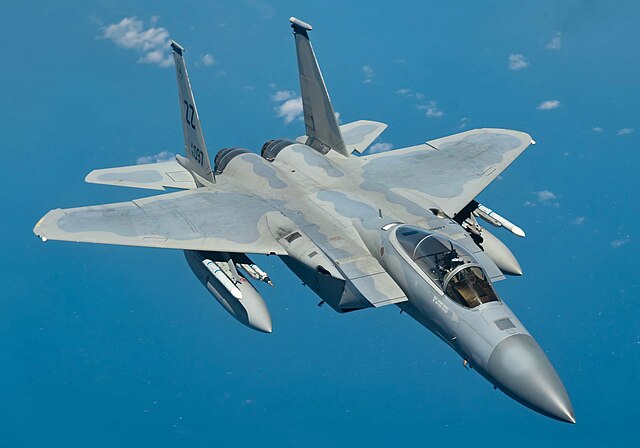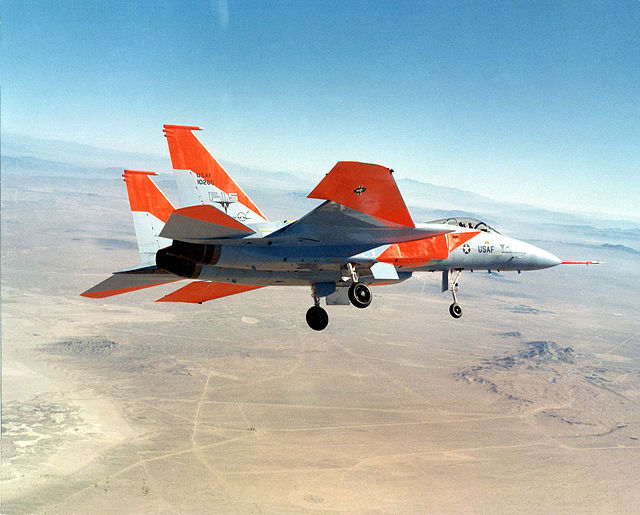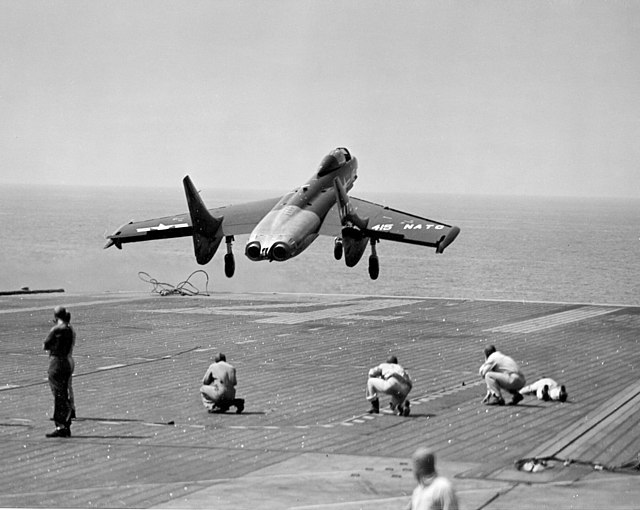McDonnell Douglas F-15 Eagle
The McDonnell Douglas F-15 Eagle is an American twin-engine, all-weather tactical fighter aircraft designed by McDonnell Douglas. Following reviews of proposals, the United States Air Force (USAF) selected McDonnell Douglas's design in 1969 to meet the service's need for a dedicated air superiority fighter. The Eagle first flew in July 1972, and entered service in 1976. It is among the most successful modern fighters, with over 100 victories and no losses in aerial combat, with the majority of the kills by the Israeli Air Force.
McDonnell Douglas F-15 Eagle
Test facility craftsman Jack Culpepper adjusts a model of the F-15 Eagle before it undergoes aerodynamic testing in the mid-1970s in the 4-foot transonic wind tunnel at Arnold Air Force Base, Tennessee
McDonnell Douglas F-15A (S/N 71-0280) during the type's first flight
F-15A cockpit
A twinjet or twin-engine jet is a jet aircraft powered by two engines. A twinjet is able to fly well enough to land with a single working engine, making it safer than a single-engine aircraft in the event of failure of an engine. Fuel efficiency of a twinjet is better than that of aircraft with more engines. These considerations have led to the widespread use of aircraft of all types with twin engines, including airliners, fixed-wing military aircraft, and others.
Boeing 737 Twinjet
The Vought F7U Cutlass was one of the first modern twinjet fighters.






